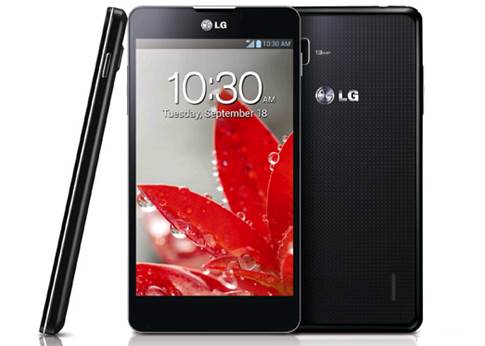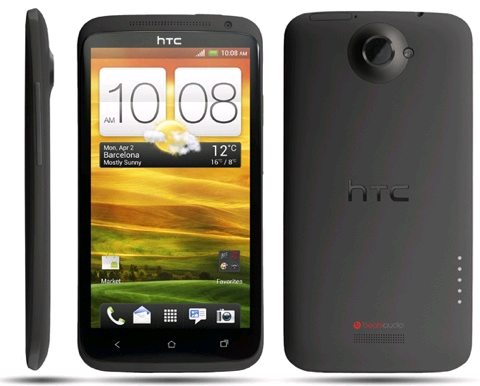Performance and battery life
The quad-core Snapdragon S4 Pro is the name
of the game for high-end products such as the Droid DNA. In particular, you
might expect there APQ8064 1.5GHz combined with MDM9615m modem, Adreno 320 GPU
and 2GB of RAM. Now this stuff is powerful, and savvy users will not be
disappointed with its performance. It's fast, and the processor speed,
complemented by the efficiency of Jelly Bean, is creating a combination of
"killers" which of course makes us happy throughout the whole time we
use the phone. To be fair, there are a few more requirements on processors due
to the higher resolution screen, but the problems that this factor causes are
more like the exception rather than the rule. As always, we have run the
standard tests applied to determine the expected performance of the Droid DNA compared
to some other quad-core phones we've used recently. Here's what we found (the
lower, the better):
HTC
Droid DNA
·
Quadrant Advanced: 8,028
·
Vellamo 2.0 HTML5: 1,752
·
AnTuTu: 14,474
·
SunSpider 0.9.1 (ms): 1,150
·
GLBenchmark 2.5 Egypt Offscreen 1080p (fps): 31
·
CF-Bench: 18,386
·
Battery life: 6:38
Samsung Galaxy Note II (N7100)
·
Quadrant Advanced: 6,819
·
Vellamo 2.0 HTML5: 1,831
·
AnTuTu: 13,539
·
SunSpider 0.9.1 (ms): 1,283
·
GLBenchmark 2.5 Egypt Offscreen 1080p (fps): 17
·
CF-Bench: 15,267
·
Battery life: 10:45

Samsung
Galaxy Note II (N7100)
LG
Opimus G (Korean model)
·
Quadrant Advanced: 7,628
·
Vellamo 2.0 HTML5: 1,710
·
AnTuTu: 11,284
·
SunSpider 0.9.1 (ms): 1,283
·
GLBenchmark 2.5 Egypt Offscreen 1080p (fps): 31
·
CF-Bench: 14,398
·
Battery life: 8:43

LG
Opimus G (Korean model)
HTC
One X + (international)
·
Quadrant Advanced: 7,457
·
Vellamo 2.0 HTML5: 1,897
·
AnTuTu: 13,591
·
SunSpider 0.9.1 (ms): 1,107
·
GLBenchmark 2.5 Egypt Offscreen 1080p (fps): 12
·
CF-Bench:14,558
·
Battery life: 7:32

HTC
One X + (international)

AnTuTu’s
scores for HTC Droid DNA with other competitors
As you can see, of course, the DNA can hold
its own position before a current giant, and even is better than the LG Optimus
G running ICS, which utilizes the same chipset (once the Optimus G is upgraded
to Jelly Bean, we can see the two phones become more equal). Thankfully, real-life
experiences commensurate with our test scores so the purchase of the DNA
because of its performance is of course easy.
That is, unless you're a gamer. It is really
sorry to say our gaming experience is erratic – some of our favorite games
worked smoothly but games like Riptide and Reign of Amira look amazing with the
Adreno 320 graphics controller after the scene, as well as the high-resolution
screen. But we fear that the screen would be a great thorn in a short time, as some
games do not seem to play well with this higher resolution. We would like to
provide one or two examples, Angry Birds Star Wars crashed every time we tried
to start a level, and Need for Speed: Most Wanted presented a black screen
instead of the track – in spite of all controls, the position of cars and
damage notifications appear without any problems.

It
is really sorry to say our gaming experience is erratic.
How does the 2020mAh Battery work with the
screen that often adds more extra pixels? Our battery check, including repeating
one video continuously, led to the fact that the phone lasted for 6 hours 38 minutes,
which was not good with the figures we saw from the One X + and the Optimus G
in similar tests. In terms of actually using, the DNA helped us through the
whole day if used moderately, but it was quite clear that the screen would
drain the battery much faster, which users will often need to remember before they
go to their daily train. It is most likely you will pass an 8-hour working day
normally if using the phone frequently. If you do not do that, it can be worth
investing a Qi pad for working in the office.
In addition to LTE and CDMA radio / EVDO
exclusively for Verizon, the Droid DNA also has international 4-band HSPA+
14.4Mbps (850/900/1900/2100) and 4-band GSM/EDGE (850/900/1800/1900). This is
not new, because the Big Red gave most of its smartphones the ability to access
GSM international roaming, but this time the difference is that the DNA’s GSM radio
and HSPA+ are not locked (like on Verizon’s the iPhone 5). That's right: we had
to insert a micro-SIM card from AT&T, use the proper APN settings and
cheers! We had access to data and the full telephone. You can do the same with
T-Mobile, though you are almost limited to EDGE (unless you live in one of the
few cities in the scope of 3G 1900MHz supply). Admittedly, this will not be the
solution to cost savings for AT&T customers who are looking for the best
phone – the Nexus 4 is more preferable, and it provides you with the faster HSPA+
– but the main emphasis here is that you have a choice. Buy it for a full
retail price and continue to do what you want with it, or at least include it
as a feature for potential eBay customers when it is time to change a newer one
after two years.
Beats Audio, whether you love or hate it, is
also present in the DNA, and as we've seen with the One X +, you do not need
one specific headset to use this feature – we used the Klipsch Image S4As, you
do not need to stick to the built-in music app. May be it has also seen a
significant increase in strength, thanks to the 2.55V amplifier that HTC has
installed. With Beats on, the DNA creates enough bass for your liking, but it still
sounds pretty great with this feature off, if you do not like it. For those who
cannot bear Beats but still want to take advantage of the audio capabilities of
the DNA, all you need to do is download one third-party music player and set it
on your own.

Beats
Audio, whether you love or hate it, is also present in the DNA.
Regarding the speakerphone, it is loud
enough and we can comfortably handle the conference call or listen to music in
the background while doing other tasks. Of course we have heard it louder, but
at least all of our calls on the Verizon network are clear and without noise, which
makes a big difference on the speakerphone. The dropped calls were never a
problem with us. The LTE speed tests in our range lay from 25Mbps to 40Mbps, all
of them happened in all the places with 5 full bars.
Price and Comparison

Its
competitor: Samsung Galaxy Note II
With a list of features and components
which are that impressive (costing $200 on a contract and $600 for retail
price), you can tell that HTC’s flagship will be an easy success in the holiday
season but it will not be so easy as that. After all, it will compete for the
top place in its price segment against other competitors like the Galaxy S III
and Motorola Droid RAZR HD, RAZR Maxx HD (and the Samsung Galaxy Note II,
released in late May), and it can be purchased for an additional $100. You
cannot argue that the Droid DNA occupied a unique position at least until now -
as the only smartphone in the U.S. market offers a 1080p screen, so those who
like the best screen have no choice but come to buy Verizon’s mobile phone. We
will not be surprised to see a wave of smartphone with similar specs at CES and
MWC early next year, so maybe the loyalists on the other networks will have
several choices quite soon. However, if you cannot wait through the holidays,
the DNA is our new favorite device on Verizon and unless you need to make use
of the stylus, this is the better (and cheaper) alternative than the Note II.
Conclusion

DNA’s
screen is 5 inches with an impressive 1080p display
Currently, it is difficult to convince us
that you can find a better thing than the Droid DNA on Verizon's lineup. At
$200, you have the best screen on the market, great camera, the operating
system of Android Jelly Bean and the best quad-core processors you can have.
Surely you cannot be wrong with the super phones we mentioned above, but HTC
will not let some quarterly financial reports hinder them from making a
high-quality product with leading components and splendid design.